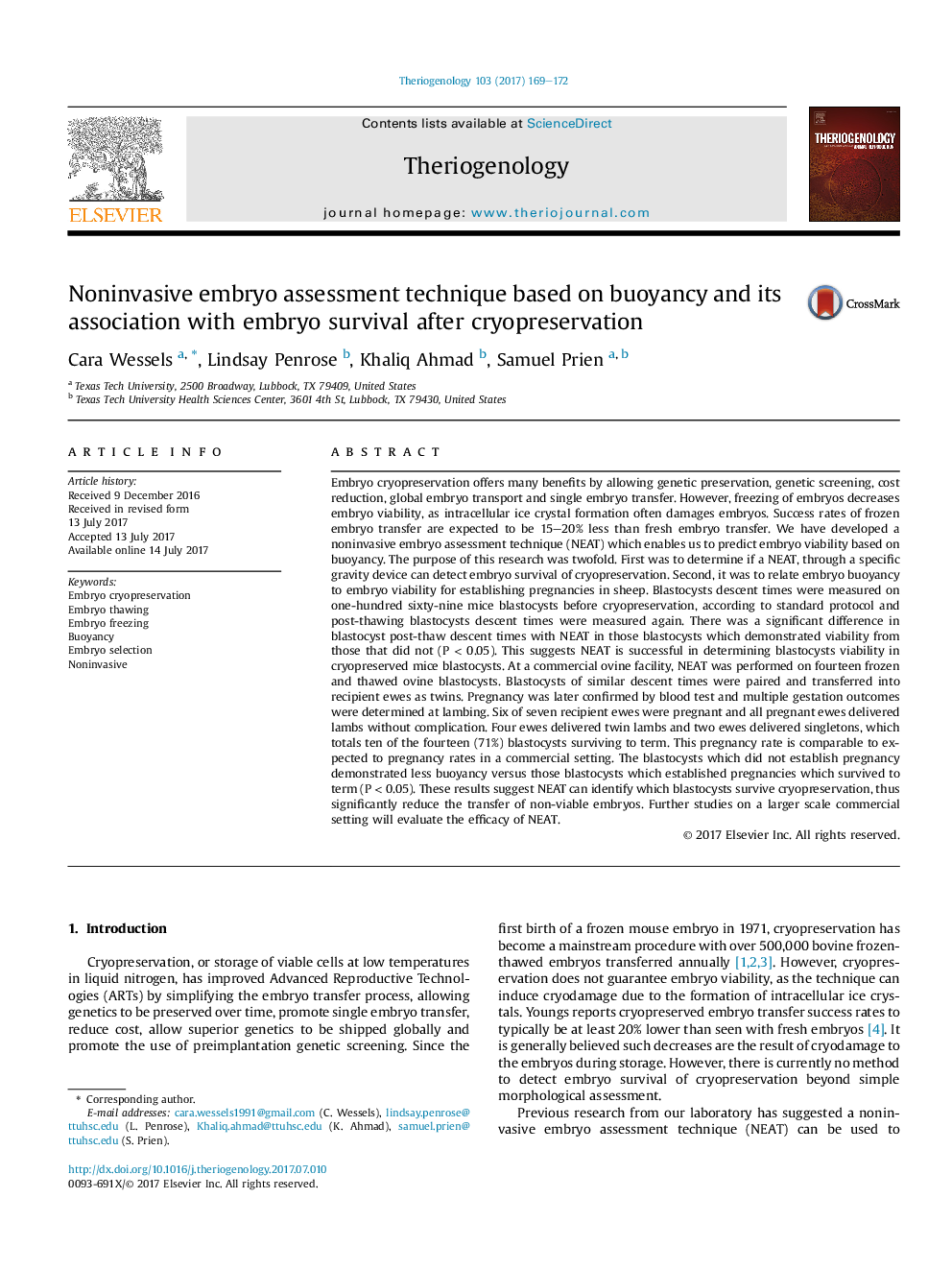| کد مقاله | کد نشریه | سال انتشار | مقاله انگلیسی | نسخه تمام متن |
|---|---|---|---|---|
| 5522919 | 1546066 | 2017 | 4 صفحه PDF | دانلود رایگان |
- A noninvasive embryo assessment technique can detect cryodamage in mice blastocysts.
- A noninvasive embryo assessment technique can detect cryodamage in ovine blastocysts.
- Ovine blastocysts exposed to a noninvasive embryo assessment technique can establish pregnancies which survive to term.
Embryo cryopreservation offers many benefits by allowing genetic preservation, genetic screening, cost reduction, global embryo transport and single embryo transfer. However, freezing of embryos decreases embryo viability, as intracellular ice crystal formation often damages embryos. Success rates of frozen embryo transfer are expected to be 15-20% less than fresh embryo transfer. We have developed a noninvasive embryo assessment technique (NEAT) which enables us to predict embryo viability based on buoyancy. The purpose of this research was twofold. First was to determine if a NEAT, through a specific gravity device can detect embryo survival of cryopreservation. Second, it was to relate embryo buoyancy to embryo viability for establishing pregnancies in sheep. Blastocysts descent times were measured on one-hundred sixty-nine mice blastocysts before cryopreservation, according to standard protocol and post-thawing blastocysts descent times were measured again. There was a significant difference in blastocyst post-thaw descent times with NEAT in those blastocysts which demonstrated viability from those that did not (PÂ <Â 0.05). This suggests NEAT is successful in determining blastocysts viability in cryopreserved mice blastocysts. At a commercial ovine facility, NEAT was performed on fourteen frozen and thawed ovine blastocysts. Blastocysts of similar descent times were paired and transferred into recipient ewes as twins. Pregnancy was later confirmed by blood test and multiple gestation outcomes were determined at lambing. Six of seven recipient ewes were pregnant and all pregnant ewes delivered lambs without complication. Four ewes delivered twin lambs and two ewes delivered singletons, which totals ten of the fourteen (71%) blastocysts surviving to term. This pregnancy rate is comparable to expected to pregnancy rates in a commercial setting. The blastocysts which did not establish pregnancy demonstrated less buoyancy versus those blastocysts which established pregnancies which survived to term (PÂ <Â 0.05). These results suggest NEAT can identify which blastocysts survive cryopreservation, thus significantly reduce the transfer of non-viable embryos. Further studies on a larger scale commercial setting will evaluate the efficacy of NEAT.
Journal: Theriogenology - Volume 103, November 2017, Pages 169-172
